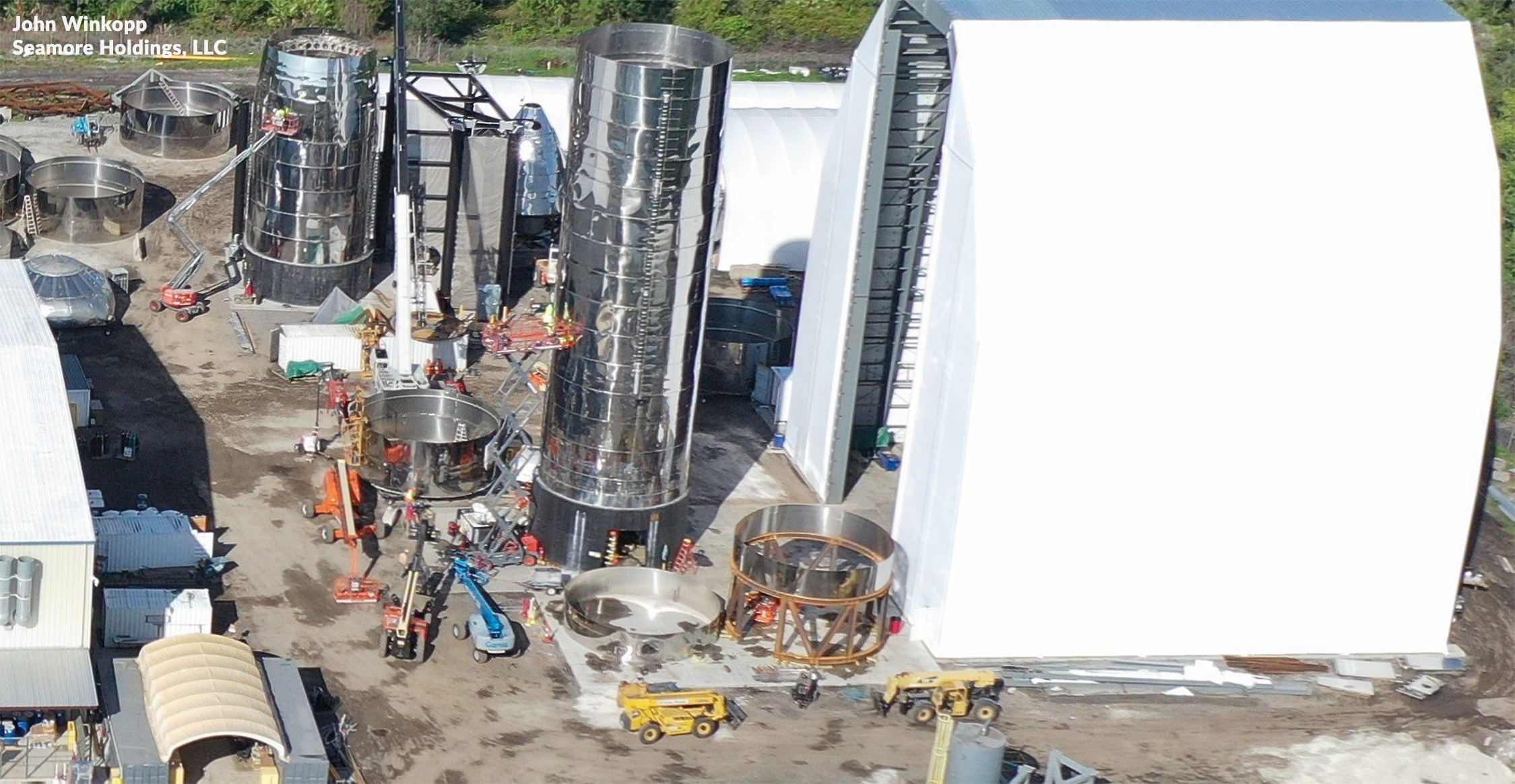

News
SpaceX’s fourth Starship prototype has begun to take shape in Florida
SpaceX’s Florida Starship team appears to have taken the first step towards assembling Starship Mk4, the fourth full-scale prototype of the next-generation spaceship.
Although SpaceX’s Boca Chica, Texas Starship campus is undeniably in the lead with their first prototype, Starship Mk1, it appears that the company’s Florida campus is far ahead of Texas with their second Starship prototype.
At the moment, SpaceX has set up two separate Starship build teams in Florida and Texas with the intention of creating a sort of internal competition to see which group’s Starships are first to flight and first to orbit. For the most part, it’s assumed that this “competition” is less a fight to the finish line than it is an A/B test, a common software development practice in which separate teams pursue different methods of achieving the same goals.
In the likely event that SpaceX is performing a radical form of A/B testing with rocket prototypes, both teams are continuously sharing best-practices and lessons-learned as they work to find the best possible methods for fabricating hardware and assembling Starships. Nevertheless, in A/B testing, fundamentally different approaches also tend to result in development schedules and final products that are unique, even if the end results are similar.
In the context of Starship, this is exactly what can be observed at SpaceX’s Florida and Texas facilities. Similarities abound in the radical method of en plein air manufacturing being implemented, while the Starship Mk1 and Mk2 hardware being built and assembled are also relatively similar, even if they have some distinct characteristics.
For example, it’s been observed that Starship Mk2 has almost certainly been constructed out of steel rings that are significantly taller than those used to assemble Starship Mk1. Taller rings meant that Mk2 needed fewer overall rings to reach the same height as Mk1, a fact that likely contributed to the impressive speed with which SpaceX’s Florida team was able to stack and weld most of Starship Mk2’s aerostructure.
Star(ship)fleet
According to SpaceX CEO Elon Musk, those similarities (and slight differences) are likely to continue for at least several more generations of prototypes. At a September 28th presentation and update on Starship, Musk revealed his opinion that Starship could be ready for its first orbital test flight(s) as few as six months from then – sometime in Q2 2020, give or take. To get there, Musk estimated that at least 5-6 Starship prototypes would need to be built in the interim.
Starship Mk3 will be built in Texas – in fact, the first ‘seamless’ steel ring may have already been fabricated at SpaceX’s Boca Chica facilities. According to Musk, Starship Mk4 will be SpaceX Cocoa’s second prototype. Based on John Winkopp’s October 17th drone overview, it appears that SpaceX’s Florida team has mounted the first steel Starship Mk4 ring atop a new work mount, potentially marking the start of Starship Mk4 assembly.
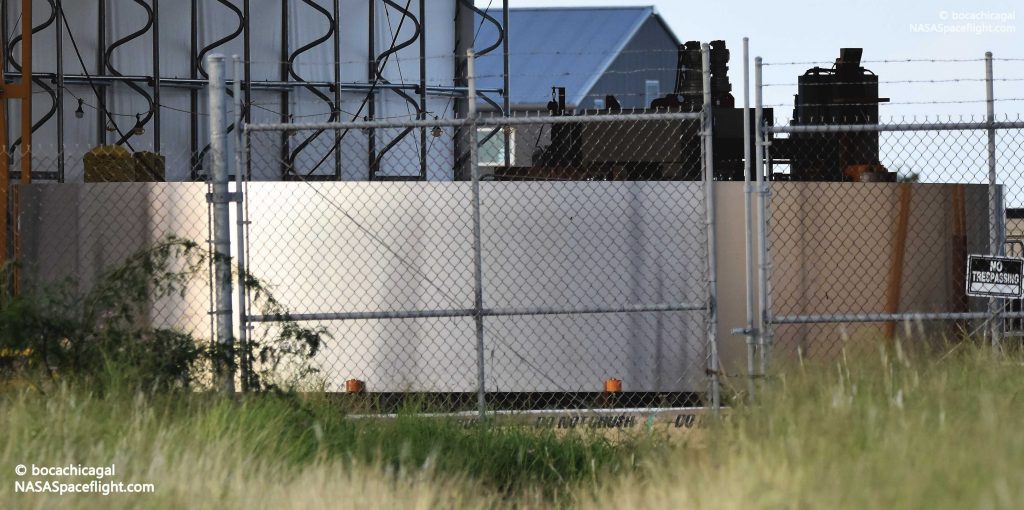
SpaceX’s Texas team has prepared at least one full-scale sample of a single-weld (‘seamless’) steel ring, perhaps the start of Mk1’s successor, Starship Mk3. Meanwhile, SpaceX Cocoa – seemingly at some kind of impasse with the final integration and assembly of Starship Mk2 – has churned out a huge number of similarly smooth steel rings, to the extent that Teslarati previously (and incorrectly) surmised that the first Super Heavy booster was being fabricated.
During Musk’s September 28th presentation, he effectively confirmed that the almost two-dozen steel rings hanging out on SpaceX’s Cocoa, Florida campus were almost certainly the beginnings of Starship Mk4. However, given the sheer number of rings present (23), the reality is that what could be the entirety of Starship Mk4’s cylindrical tank and thrust structure section is probably sitting outside in Florida, waiting to be stacked. Altogether, those 23 rings could reach a height of more than 40m (130 ft), potentially more than is actually needed for a Starship tank section.
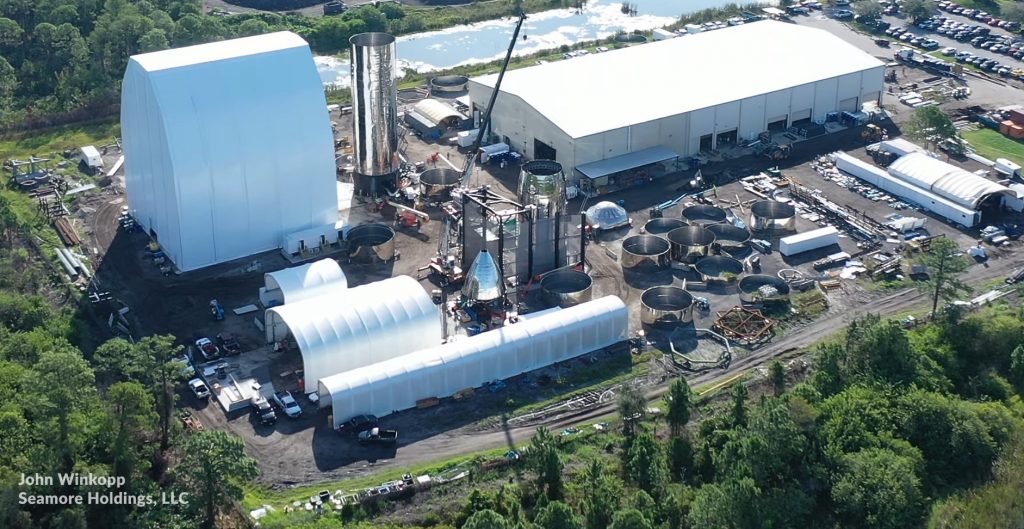
Last but not least, local photographer and spaceflight fan Jon Van Horne captured what looks like a new Starship tank dome in work at SpaceX’s prospective Kennedy Space Center (KSC) build site, known as Roberts Rd. Given that Starship Mk2 already has two domes installed and a third and final dome staged and ready for installation, this fourth dome is very likely the first for Starship Mk4.
In short, SpaceX’s Florida team is probably weeks ahead of Boca Chica in the process of building a second full-scale Starship prototype. Of course, the ultimate winner of this mock competition isn’t Florida or Texas, it’s SpaceX’s Starship program as a whole.
Check out Teslarati’s Marketplace! We offer Tesla accessories, including for the Tesla Cybertruck and Tesla Model 3.

News
Tesla (TSLA) receives “Buy” rating and $551 PT from Canaccord Genuity
He also maintained a “Buy” rating for TSLA stock over the company’s improving long-term outlook, which is driven by autonomy and robotics.
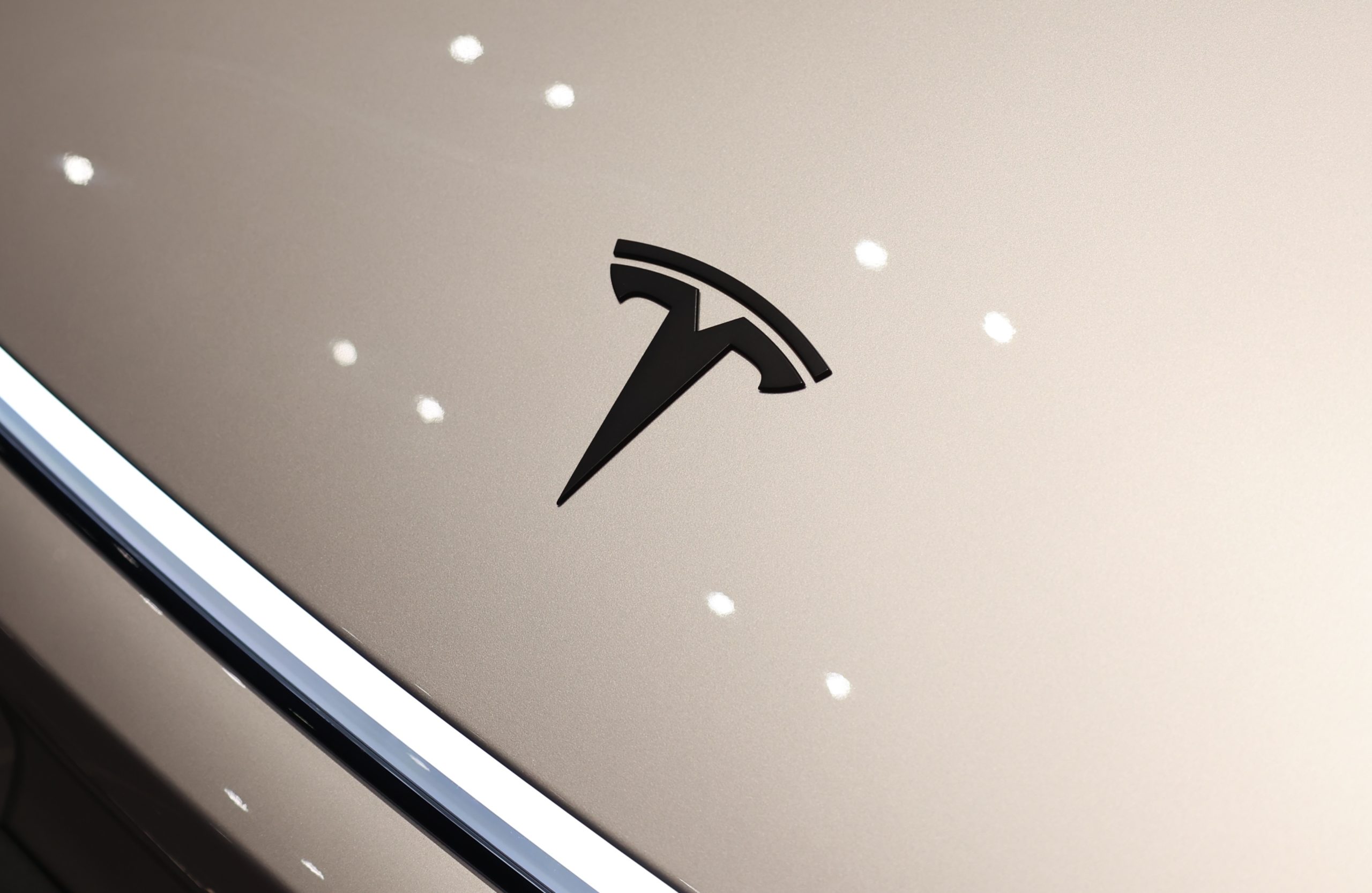
Canaccord Genuity analyst George Gianarikas raised his Tesla (NASDAQ:TSLA) price target from $482 to $551. He also maintained a “Buy” rating for TSLA stock over the company’s improving long-term outlook, which is driven by autonomy and robotics.
The analyst’s updated note
Gianarikas lowered his 4Q25 delivery estimates but pointed to several positive factors in the Tesla story. He noted that EV adoption in emerging markets is gaining pace, and progress in FSD and the Robotaxi rollout in 2026 represent major upside drivers. Further progress in the Optimus program next year could also add more momentum for the electric vehicle maker.
“Overall, yes, 4Q25 delivery expectations are being revised lower. However, the reset in the US EV market is laying the groundwork for a more durable and attractive long-term demand environment.
“At the same time, EV penetration in emerging markets is accelerating, reinforcing Tesla’s potential multi‑year growth runway beyond the US. Global progress in FSD and the anticipated rollout of a larger robotaxi fleet in 2026 are increasingly important components of the Tesla equity story and could provide sentiment tailwinds,” the analyst wrote.
Tesla’s busy 2026
The upcoming year would be a busy one for Tesla, considering the company’s plans and targets. The autonomous two-seat Cybercab has been confirmed to start production sometime in Q2 2026, as per Elon Musk during the 2025 Annual Shareholder Meeting.
Apart from this, Tesla is also expected to unveil the next-generation Roadster on April 1, 2026. Tesla is also expected to start high-volume production of the Tesla Semi in Nevada next year.
Apart from vehicle launches, Tesla has expressed its intentions to significantly ramp the rollout of FSD to several regions worldwide, such as Europe. Plans are also underway to launch more Robotaxi networks in several more key areas across the United States.
News
Waymo sues Santa Monica over order to halt overnight charging sessions
In its complaint, Waymo argued that its self-driving cars’ operations do not constitute a public nuisance, and compliance with the city’s order would cause the company irreparable harm.
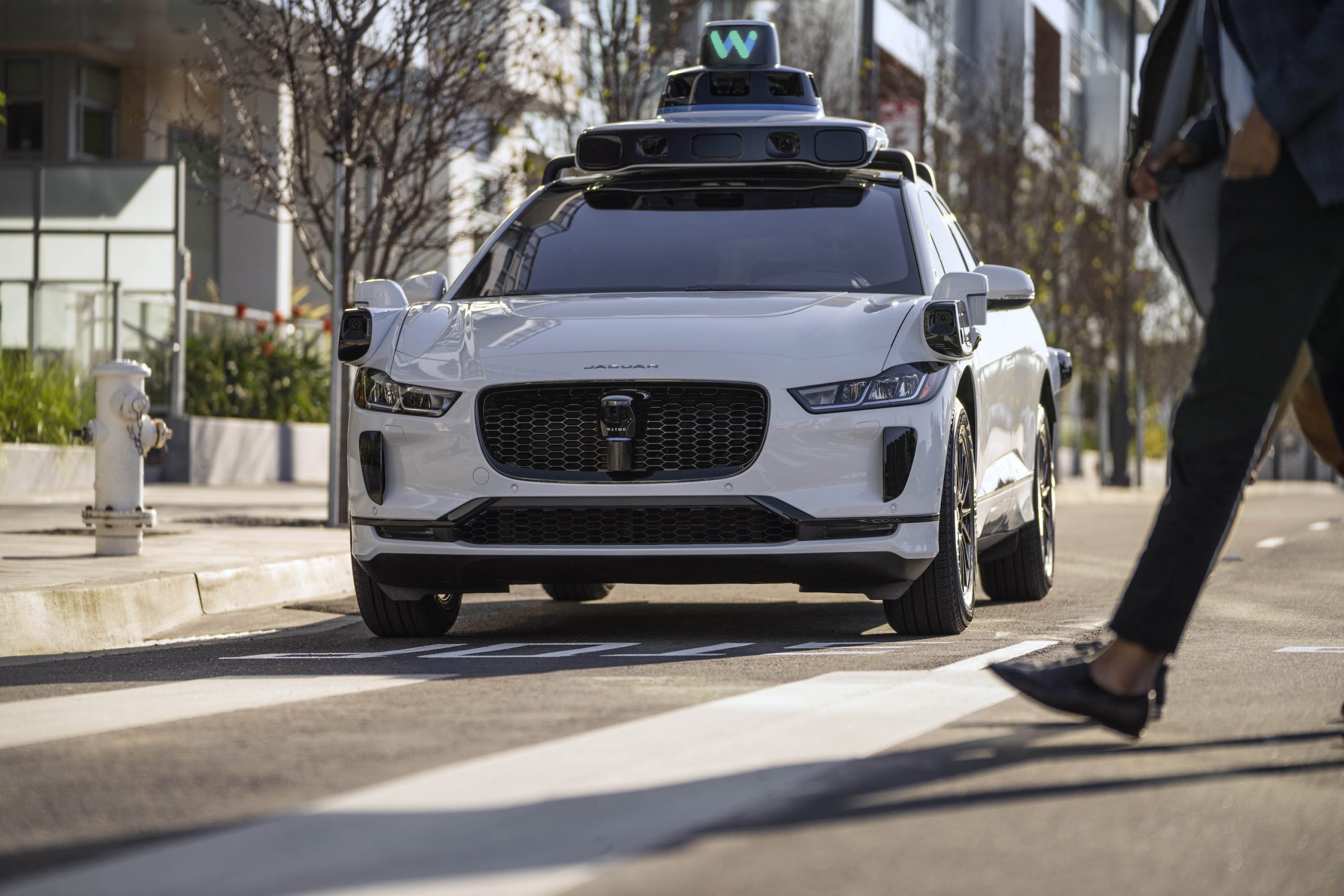
Waymo has filed a lawsuit against the City of Santa Monica in Los Angeles County Superior Court, seeking to block an order that requires the company to cease overnight charging at two facilities.
In its complaint, Waymo argued that its self-driving cars’ operations do not constitute a public nuisance, and compliance with the city’s order would cause the company irreparable harm.
Nuisance claims
As noted in a report from the Los Angeles Times, Waymo’s two charging sites at Euclid Street and Broadway have operated for about a year, supporting the company’s growing fleet with round-the-clock activity. Unfortunately, this has also resulted in residents in the area reportedly being unable to sleep due to incessant beeping from self-driving taxis that are moving in and out of the charging stations around the clock.
Frustrated residents have protested against the Waymos by blocking the vehicles’ paths, placing cones, and “stacking” cars to create backups. This has also resulted in multiple calls to the police.
Last month, the city issued an order to Waymo and its charging partner, Voltera, to cease overnight operations at the charging locations, stating that the self-driving vehicles’ activities at night were a public nuisance. A December 15 meeting yielded no agreement on mitigations like software rerouting. Waymo proposed changes, but the city reportedly insisted that nothing would satisfy the irate residents.
“We are disappointed that the City has chosen an adversarial path over a collaborative one. The City’s position has been to insist that no actions taken or proposed by Waymo would satisfy the complaining neighbors and therefore must be deemed insufficient,” a Waymo spokesperson stated.
Waymo pushes back
In its legal complaint, Waymo stated that its “activities at the Broadway Facilities do not constitute a public nuisance.” The company also noted that it “faces imminent and irreparable harm to its operations, employees, and customers” from the city’s order. The suit also stated that the city was fully aware that the Voltera charging sites would be operating around the clock to support Waymo’s self-driving taxis.
The company highlighted over one million trips in Santa Monica since launch, with more than 50,000 rides starting or ending there in November alone. Waymo also criticized the city for adopting a contentious strategy against businesses.
“The City of Santa Monica’s recent actions are inconsistent with its stated goal of attracting investment. At a time when the City faces a serious fiscal crisis, officials are choosing to obstruct properly permitted investment rather than fostering a ‘ready for business’ environment,” Waymo stated.
News
Tesla FSD v14.2.2 is getting rave reviews from drivers
So far, early testers have reported buttery-smooth drives with confident performance, even at night or on twisty roads.

Tesla Full Self-Driving (Supervised) v14.2.2 is receiving positive reviews from owners, with several drivers praising the build’s lack of hesitation during lane changes and its smoother decision-making, among others.
The update, which started rolling out on Monday, also adds features like dynamic arrival pin adjustment. So far, early testers have reported buttery-smooth drives with confident performance, even at night or on twisty roads.
Owners highlight major improvements
Longtime Tesla owner and FSD user @BLKMDL3 shared a detailed 10-hour impression of FSD v14.2.2, noting that the system exhibited “zero lane change hesitation” and “extremely refined” lane choices. He praised Mad Max mode’s performance, stellar parking in locations including ticket dispensers, and impressive canyon runs even in dark conditions.
Fellow FSD user Dan Burkland reported an hour of FSD v14.2.2’s nighttime driving with “zero hesitations” and “buttery smooth” confidence reminiscent of Robotaxi rides in areas such as Austin, Texas. Veteran FSD user Whole Mars Catalog also demonstrated voice navigation via Grok, while Tesla owner Devin Olsen completed a nearly two-hour drive with FSD v14.2.2 in heavy traffic and rain with strong performance.
Closer to unsupervised
FSD has been receiving rave reviews, even from Tesla’s competitors. Xpeng CEO He Xiaopeng, for one, offered fresh praise for FSD v14.2 after visiting Silicon Valley. Following extended test drives of Tesla vehicles running the latest FSD software, He stated that the system has made major strides, reinforcing his view that Tesla’s approach to autonomy is indeed the proper path towards autonomy.
According to He, Tesla’s FSD has evolved from a smooth Level 2 advanced driver assistance system into what he described as a “near-Level 4” experience in terms of capabilities. While acknowledging that areas of improvement are still present, the Xpeng CEO stated that FSD’s current iteration significantly surpasses last year’s capabilities. He also reiterated his belief that Tesla’s strategy of using the same autonomous software and hardware architecture across private vehicles and robotaxis is the right long-term approach, as it would allow users to bypass intermediate autonomy stages and move closer to Level 4 functionality.








